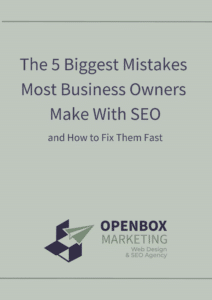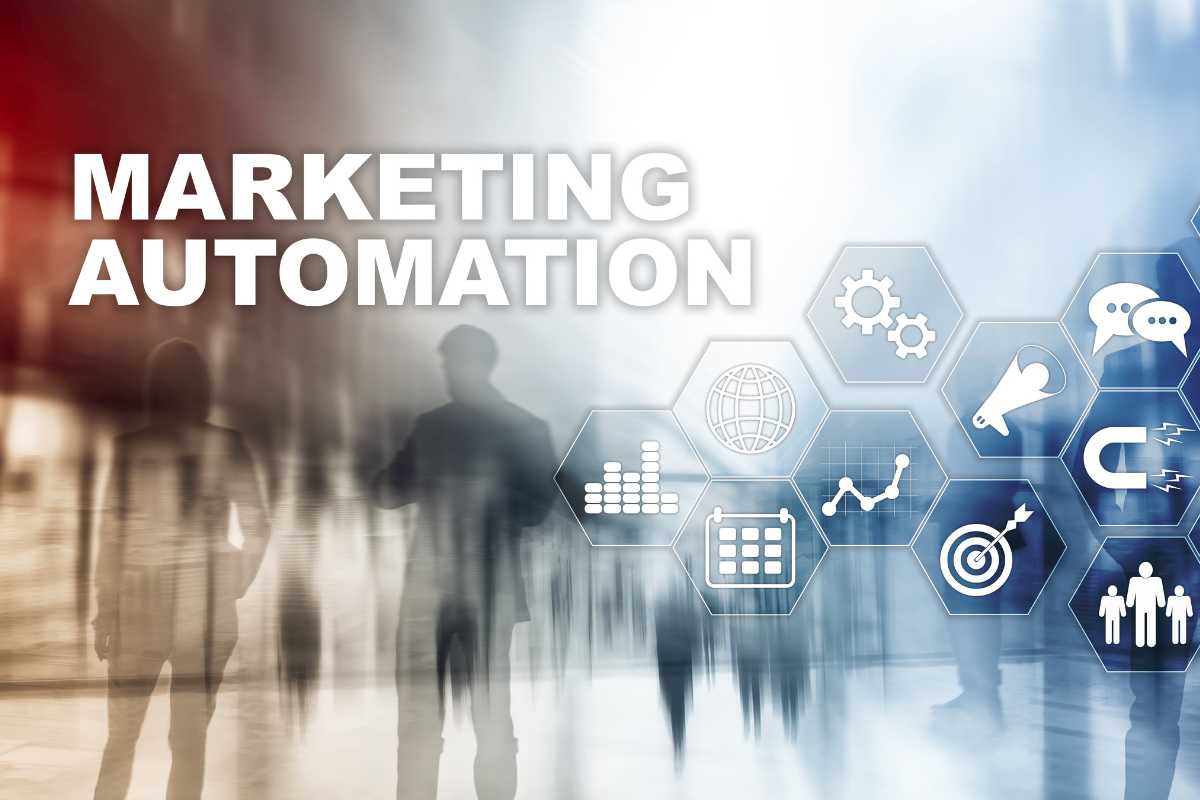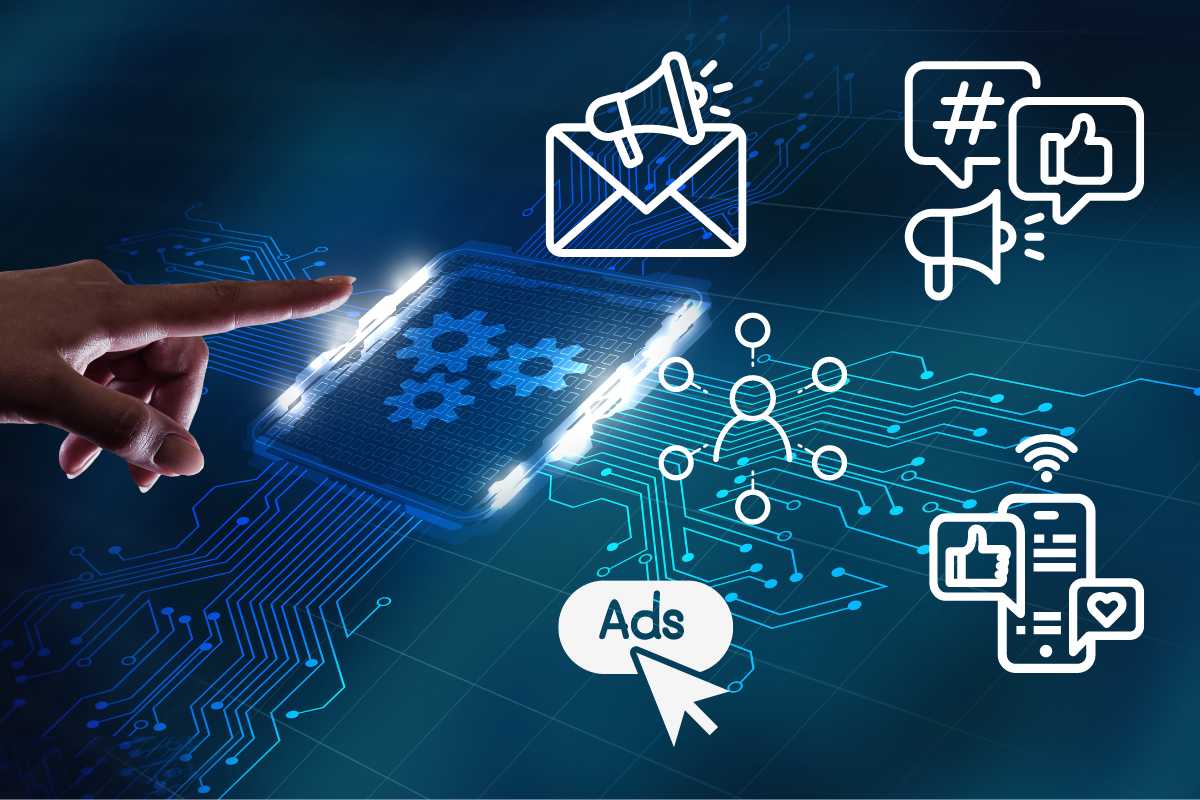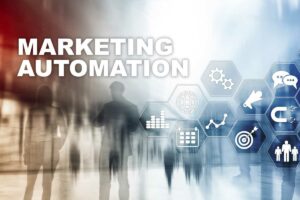Don't let SEO mistakes hinder your business's online success. Download our FREE guide today and unlock the strategies to optimise your visibility and avoid common pitfalls. Take charge and get your guide now!

In this article, we explore how understanding and implementing marketing automation benefits your business.

What is Marketing Automation?
Marketing automation is a type of software companies use to target customers with the help of automated marketing messages via several channels like email, social media, websites, and text messages.
Marketing automation is triggered by customers’ actions like filling out a standard form and purchasing or subscribing to a blog or newsletter. It helps automate repetitive, manual tasks like posting on social media platforms, sending emails or collecting information to provide customers with more personalised experiences.
Benefits of marketing automation for businesses:
- complete repetitive tasks faster and easier;
- have a more targeted communication with customers;
- nurture more leads;
- increase revenue;
- review activity and results more efficiently.
Benefits of marketing automation for customers:
- Receive more relevant content Automation allows you to use behavioural targeting and buyer personas to send your prospects and existing customers only the information they need without wasting their time
- Provide faster, better replies By prioritising tasks and understanding customers’ history (their previous purchases or actions on your website), marketing automation enables you to send your customers faster and more targeted answers to their inquiries
- Receive the same type of experience on all channels Based on the data collected and stored, marketing automation offers customers the same customised experience, like pre-filled forms across all channels they use to contact you.
What is CRM Marketing Automation?
Customer Relationship Management (CRM) automation means automating various business tasks like sales projections, lead scoring, customer service records, lead management, contact management or automated responses.
CRM marketing automation helps teams keep the evidence of their engagement with prospects and existing customers, increases productivity and saves marketers time to focus on other essential activities like lead generation or deal conversion.
The Benefits of CRM Automation:
- generates more leads;
- increases sales conversions by focusing on best leads;
- drives higher customer retention rates;
- streamlines processes so more is done in less time;
- improves the customer experience by answering their questions faster.

What are the Different Types of Marketing Automation?
Email marketing automation
Email marketing automation uses email to engage customers by sending them automated emails based on their interactions with your business. It improves marketing efforts and helps reconnect with customers who have not interacted recently with your business, contributing to more conversions.
For example, you can set up an automated email campaign that sends personalised messages to your customers, such as a welcome email to new subscribers.
Social media marketing automation
Social media marketing automation is a digital marketing automation that uses social media to engage and connect with your customers.
It enables you to automate your social media posting, listen and interact with your potential and existing customers, monitor your competitors’ activity on different social media channels and increase your digital marketing campaigns.
Omnichannel automation
Omnichannel marketing allows you to automate tasks like email marketing to provide a unified customer experience across multiple channels and monitor how customers interact with your business.
Advertising Automation
Advertising automation is a marketing automation that adjusts the type of advertisement displayed based on the customer’s behaviour. For example, if a customer visits the product page on your website, advertising automation will retarget by showing customer ads about products on the following sites they visit.
Mobile marketing automation
Mobile marketing automation enables you to interact with your customers with the help of mobile devices. This type of automation includes features like conducting SMS marketing campaigns, helping you build relationships, and tracking their locations to send customised messages based on this parameter.
Marketing Analytics Automation
Marketing analytics automation is a valuable tool for tracking ads, email and social media campaigns. This automation is handy in email campaigns to check the rates of emails delivered, opened, clicked through or bounced. It also shows you the performance of each ad, social media and blog campaign and uses this data to improve future campaigns.
CRM with Marketing Automation
CRM is a marketer’s best friend. When used with marketing automation, it works miracles in generating more leads, streamlining your tasks and boosting conversions. CRM with marketing automation helps you access customer demographics, purchase history, email addresses and other data customer data, inform your marketers about new prospects and lead scoring or send content that will bring in more conversions.
How Do You Create a Marketing Automation Strategy?

A marketing automation strategy helps establish how and where to allocate your marketing resources and which tasks you can automate.
Building a template marketing automation strategy allows you to save time by applying it to other sections of your business. It facilitates better results by identifying the areas for new marketing tools.
Step 1
Establish your objectives
Establishing your objectives is an essential part of your strategy, as it helps you put the plan into action, monitor its progress and determine what you need to automate.
Some of the most common objectives are to reactivate lapsed customers, increase the conversion rate from free trial users to paying customers or decrease time allocated to email list segmentation.
If, for example, your objective is to increase brand awareness, you can focus on automating your social media activity and interaction with prospects and existing customers on these platforms.
Step 2
Define Key Performance Indicators (KPIs)
Once you set your objectives, you need tools to measure their progress.
For example, if your objective is to increase leads, your KPIs can be to raise newsletter signups or webinar attendance by 10% in 2024.
For reactivating lapsed customers, your KPI can be to reactivate 100 lapsed customers from the previous quarter.
For improving brand awareness, your KPI could mean increasing the number of landing page visits to 10,000 this month.
Step 3
Improve your customer's journey through the sales funnel
A customer journey represents the sum of experiences your customers have when engaging with your brand through the stages of the sales funnel.
Map the steps the customer takes from discovering your brand (prospect) to becoming a loyal customer.
Every customer journey is different, but most of them usually contain the following stages:
- Awareness: the prospect (potential customer) becomes aware of your brand.
- Consideration: the potential customer gains interest in your brand and considers whether to choose your products and not those of a competitor.
- Decision: the prospect decides to buy from you, becoming a paying customer;
- Retention and advocacy: the customer buys from you again and shares his opinion about your products with others.
Improving the customer journey is a critical element of a successful marketing strategy because when the customers are satisfied with the buying process, they will most likely purchase again from you.
You can improve the customer journey by:
- providing excellent customer service;
- offering self-service tools like online tutorials and FAQs;
- simplifying the buying process by removing obstacles along the purchasing timeline.
Step 4
Find and use the right marketing automation tools
To implement a successful strategy, you need to choose the right marketing automation tools, which can be difficult, given the thousands of marketing software solutions available.
To make this process easier, consider the following questions:
- How complex does my automation need to be? Do I need a simple trigger or a complex one that will set in motion a series of automated actions? The answer to these questions will help you identify the features to seek in the software solutions out there and determine the budget you need to buy them;
- Is the solution I am considering buying easy to use? The answer to this question is essential because regardless of how efficient your automation tools are, if they are difficult to use and time-consuming, your team will not be able to implement them into their daily schedules;
- Can I integrate this solution with my existing marketing software? The solution you buy must be easy to combine with your existing tools, like a CRM, to enable scaling your automation when needed. This will improve your marketing results and allow you to continue using existing solutions (that you have paid for) while avoiding additional charges for automation upgrades.
Step 5
Implement and revise
Before going “live” with a campaign to your customers, run some tests, depending on the marketing automation tools and platform you use. This saves you the trouble of explaining to your customers the errors or malfunctions in the interaction with your business, website or marketing campaigns.
Once you are sure the marketing automation of your project works in your tests, try it with a small group of customers and revise the results. Marketing automation is designed to help you work smarter and faster, but if it fails, fix the issues promptly to get things back up and running.
By understanding and implementing marketing automation, your business will achieve better results, meet its goals, increase brand awareness, streamline internal processes and tasks, and improve customers’ journey and engagement with your products.
Share this Article

Janet Podham
Janet Podham is the owner of Openbox Marketing Limited. She has a post-graduate diploma from the University of Otago, majoring in Data Science. She has spent two years studying website design and SEO in the Champions Masters Program at the eBusiness Institute in Australia. She loves helping people and knits for local foster children in her spare time.






